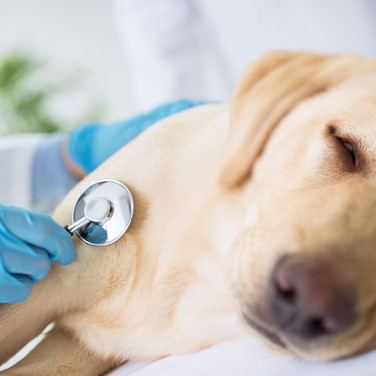SYMPTOMS
Eye Bleeding in Dogs - Causes and Treatments for Hyphema in Dogs
페이지 정보
본문


What is eye bleeding in dogs?
Hyphema, or bleeding in the eye, can occur due to various factors. This condition can be caused by many things from trauma to underlying diseases such as glaucoma, retinal detachment, or tumors. When a dog has blood in its eyes, the whites may appear dark pink or very red. Blood can sometimes mix with the clear fluid on the eye's surface, causing a dog discomfort and pain. In severe cases, the blood may even fill over the outer eye, requiring immediate veterinary attention as it can be an emergency.
Causes of hyphema in dogs
Eye bleeding symptoms are most often due to serious causes.
The most common causes of hyphema are:
- Head trauma
- Anterior uveitis
- Eye Tumors
- Congenital or systemic disease (hypertension, thyroid)
- Retinal Separation
- Infection
- Vasculitis
- Eye diseases (glaucoma, retinal abnormalities)
Symptoms and signs accompanying eye bleeding in dogs
The primary symptom of hyphema is easily visible but other signs can accompany this condition. Blood clots or small pools of blood can form leading to widespread coverage of the eye. Signs of pain and swelling in the eye can also occur. You may also notice your pet becoming extra sensitive to light and potential visual impairment. It is important to note that symptoms may appear suddenly, worsen gradually, and frequently recur.
Risk of hyphema in dogs and when to see a vet
Bleeding in the eyes is a serious symptom that warrants immediate attention, as it can indicate poor overall eye health. Whether resulting from head or eye trauma, or conditions like retinal detachment, high blood pressure, or glaucoma, prompt treatment is necessary to prevent the risk of blindness. Certain breeds, such as Rough Collies, Labrador Retrievers, and Boxers, are more susceptible to eye hemorrhage naturally and should be taken into consideration when caring for them.
Home treatment for eye bleeding in dogs

Eye bleeding in dogs requires medical attention and professional treatment. If your dog exhibits signs of eye pain and continues to scratch their face, it is advisable to use a neck collar to prevent further harm. In case of suspected vision problems, ensure a safe environment to prevent accidental collisions and additional trauma.
Diagnosing eye bleeding in dogs

When visiting the vet, consider any activities the dog engaged in that could have caused eye irritation, like rummaging through trash or potential foreign object penetration. Providing as much information for your vet can help with the diagnosis process. The veterinarian will prioritize rapid treatment while also investigating for any underlying cause. Through an ophthalmic exam, the vet will be able to assess dilation, interior eye issues, and determine if the bleeding occurs within or on the eye surface. To gather comprehensive information, the vet will inquire about the dog's medical history, potential exposure to toxins, and medication usage.
Following these initial assessments, further diagnostic tests may be necessary, such as:
-
Blood tests
Blood tests such as a complete blood count, serum biochemical test, blood coagulation function test, and blood pressure test may be conducted.
-
Urinalysis
A urine test may be conducted to assess an underlying kidney disease.
-
Chest and abdominal X-rays
Imaging tests can assess the anterior chamber of the eye and diagnose retinal detachment, lens prolapse, and potential vitreous hemorrhage.
Treatment for eye bleeding in dogs
When it comes to blood in your dog's eye, the treatment depends on the underlying condition. To address eye hemorrhage, it's crucial to treat both the bleeding itself and its underlying cause while managing inflammation. Corticosteroids can reduce inflammation, and atropine can minimize adhesion of the lens and iris, available in eye drops or ointment forms.
-
Eye drops and medication
Corticosteroids can be used to treat inflammation caused by the bleeding and atropine eye drops can be used to dilate the pupil to minimize the stickiness of the lens and iris.
-
Surgery
Traumatic injuries and removing foreign objects are removed through surgery. The case of retinal detachment will also require a surgical procedure.
Preventing eye bleeding in dogs
Regular checkups are crucial to identify underlying causes of eye bleeding, including trauma, high blood pressure, and glaucoma. These checkups typically involve assessing intraocular pressure to detect eye diseases like glaucoma, conducting blood clotting tests to identify thrombotic disorders, and using radiation and ultrasound to examine eye tumors. By proactively monitoring and addressing these conditions, effective prevention of this concerning symptom can be implemented.
Find out more about your dog’s symptoms and diseases on the Buddydoc app!

The Buddydoc library is filled with everything you’d want to know about each symptom and disease your pet may experience. If you would like to find out more about the causes, signs, treatments, preventions, and more for your dog’s disease. Try out the Buddydoc app and search for your pet’s symptoms or diseases in the Buddydoc library.













